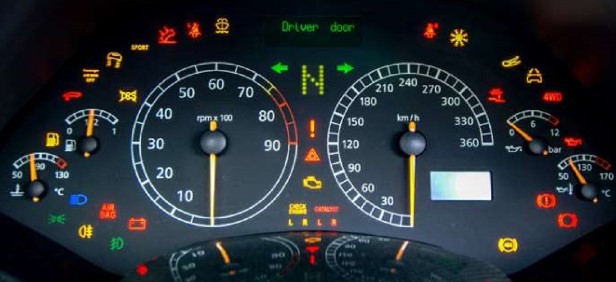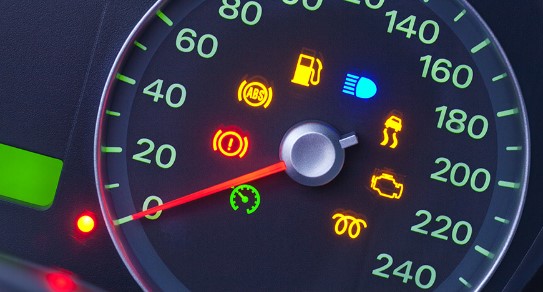You know those little red lights on the dashboards of our cars that signify when something is wrong? They’re called warning lights, and they’re there to warn us of potential danger. But what happens when those warning lights stop working? We may not know until it’s too late. In this blog post, we will explore how you can make sure that warning lights are working by paying attention to them and taking care of your car. We will also look at what to do if you find yourself in a situation where your warning light has failed.
Why Should You Test Your Warning Lights?

If your dashboard is lit up like a Christmas tree, it can be difficult to determine which warning light is the most important. However, all warning lights are important and you should take action as soon as possible when any of them illuminate. Here are four reasons why you should test your warning lights:
To ensure that they are working properly
All warning lights are designed to alert you to a problem with your vehicle. If a warning light is not working properly, you may not be aware of an issue until it’s too late. By testing your warning lights regularly, you can be sure that they will work when you need them.
To avoid costly repairs
Ignoring a warning light can lead to more serious and costly problems down the road. For example, if your engine light is on, it could be indicative of a serious engine issue. By taking your vehicle in for diagnostic testing as soon as the light comes on, you could save yourself thousands of dollars in repairs.
To maintain safety on the road
Your vehicle’s warning lights are there for a reason – to keep you safe on the road. If you ignore them, you’re putting yourself and others at risk. For example, if your brake light is on, it means there could be a problem with your brakes. Driving without brakes is extremely dangerous and should be avoided at all cost.
See also: How To Turn Off Dashboard Warning Lights
How to Test Your Warning Lights

If your car has a warning light on the dash, it’s important to test it to make sure it’s working properly. Here’s how to do it:
- Start the car and let it idle for a few minutes.
- Turn on all the lights in the car, including the headlights, taillights, and interior lights.
- With the engine still running, turn off all the lights in the car except for the warning light you want to test.
- Observe the warning light closely. If it comes on, then it’s working properly. If not, there may be a problem with the bulb or circuitry.
What to Do If a Light Is Not Working?
If you are driving and a warning light on your dash comes on, the first thing you should do is try to identify which light it is. Warning lights can be different colors, but most are either red or yellow. If the light is red, this usually indicates a more serious problem that needs to be addressed immediately. If the light is yellow, it may not be as urgent, but you should still have the problem checked out as soon as possible.
Once you have identified the warning light, consult your vehicle’s owner’s manual to see what it means. If you don’t have the manual with you, you can often find this information online. Once you know what the warning light means, take appropriate action. If it is a red light, pull over and turn off the engine as soon as it is safe to do so. Then call a tow truck or roadside assistance to get your car towed to a nearby service station.
If the warning light is yellow, you may be able to continue driving for a short distance until you can get to a service station. However, drive carefully and keep an eye on all of your gauges and indicators to make sure nothing else is wrong. If anything else seems abnormal, pull over and turn off the engine until help arrives.
If you’re ever in doubt about whether or not your warning lights are working, there’s an easy way to check. Just turn on your hazard lights and then walk around your vehicle. If the lights are working, you should see them flashing. If they’re not, then you’ll need to get them fixed as soon as possible. Thanks for reading and be sure to stay safe out there!
FAQs About How You Can Make Sure That Warning Lights Are Working?
What does the temperature light or gauge indicate?
Temperature light or gauge is an important indicator in any vehicle that monitors the level of coolant. When this gauge illuminates, it is a sign that the engine’s coolant may be too hot or too low and needs attention immediately. It is recommended to pull off the road as soon as it is safe to do so and seek professional help when this warning light/gauge comes on. Caution should also be taken never to attempt to remove the radiator cap while the engine is still running hot.
What does the alternator warning light indicate?
The alternator light is a warning sign that your vehicle’s alternator may not be working properly. An illuminated battery or ALT can indicate the need for servicing, as an inoperative alternator will prevent the battery from being recharged during a ride. To maintain power and keep your vehicle running, it is essential to have a functional alternator. Without one, you could end up stranded due to a dead battery.
What warning light or gauge indicates the engine is not be lubricated?
The oil pressure warning light indicates a significant issue requiring immediate attention. If illuminated, the driver should not continue operating the vehicle as this means lubrication is either low or completely lost. It is essential to stop the car in a safe place immediately when this happens. Failure to do so can lead to severe damage of mechanical components and even engine failure.
When oil pressure warning light goes on with the engine running it indicates that the oil needs changing?
When the oil light on the dashboard turns on, it may be an indicator of low oil pressure, which could signify a few issues. These include being low in oil levels, having dirty or degraded oil running through the engine, or potentially even developing an oil leak. It is important to address this issue as soon as possible to avoid any further damage to your vehicle’s engine and performance.


I totally agree with the article that it is very important to test our car’s warning lights regularly. I have experienced this issue myself, a few months ago my engine light came on and I didn’t take it seriously and kept driving. I ended up having to spend a lot of money on repairs and if I had just taken it to a service station earlier, I could have saved some money. It’s so important to pay attention to any warning lights and take action immediately. I think it would be helpful if the article also mentioned preventive maintenance that can be done to make sure these lights don’t come on in the first place. For example, getting regular oil changes, checking the tire pressure, etc. What do you guys think?